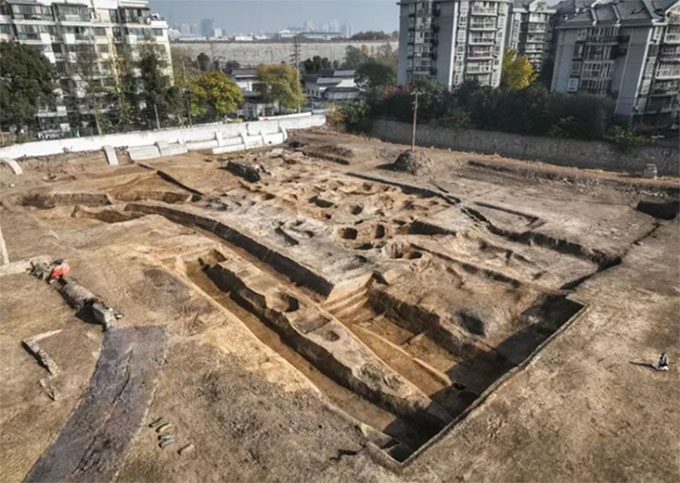The History of Nanjing’s Formation in China Extended by Over 600 Years Following New Archaeological Discoveries.
According to the People’s Daily of China, the ancient city ruins of Changgan discovered at the Xinzhai archaeological site in eastern Nanjing (Jiangsu Province) have been verified by reputable historians and archaeologists to date back 3,100 years, extending the history of Nanjing’s formation by over 600 years.

Excavation site of the ancient city ruins of Changgan in Nanjing, China. (Photo: The Paper)
According to Mr. Tran Dai Hai, head of the Xinzhai archaeological excavation project, in 2017, the Nanjing Archaeological Institute began excavating this site to facilitate urban infrastructure development. In 2020, archaeologists discovered at least four circular ditches from the late Shang dynasty and early Zhou dynasty.
Mr. Hai noted that within the ditches, there are clear remnants of collapsed clay walls; the wells outside the ditches were constructed during the late Shang dynasty, along with numerous triangular patterned ceramics and horizontal bands, which distinctly characterize this period.
Additionally, many artifacts found at the site, such as pig bones and charcoal, have been carbon-dated, indicating they belong to the late Shang dynasty and early Zhou dynasty. To date, the excavation area of the Xinzhai archaeological site has reached 12,000 m2, uncovering over 500 types of relics and more than 10,000 archaeological artifacts.

Some cultural artifacts unearthed. (Photo: The Paper).
Nanjing is a significant city in China’s history and culture. It is located downstream of the Yangtze River and is part of the Yangtze River Delta Economic Zone.
Nanjing has served as the capital for six feudal dynasties in China and is regarded as one of the four great ancient capitals of the country. It has also been a center for education, research, transportation, and tourism throughout modern Chinese history.
Today, this city of over 6.4 million residents remains one of China’s important cities and is the second-largest commercial center in eastern China after Shanghai.


















































